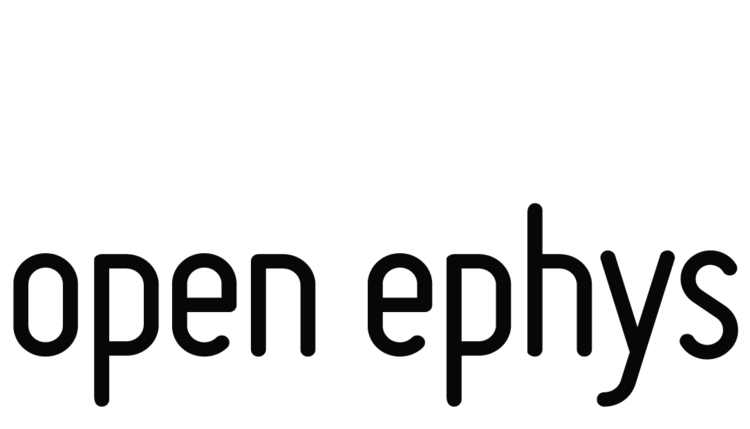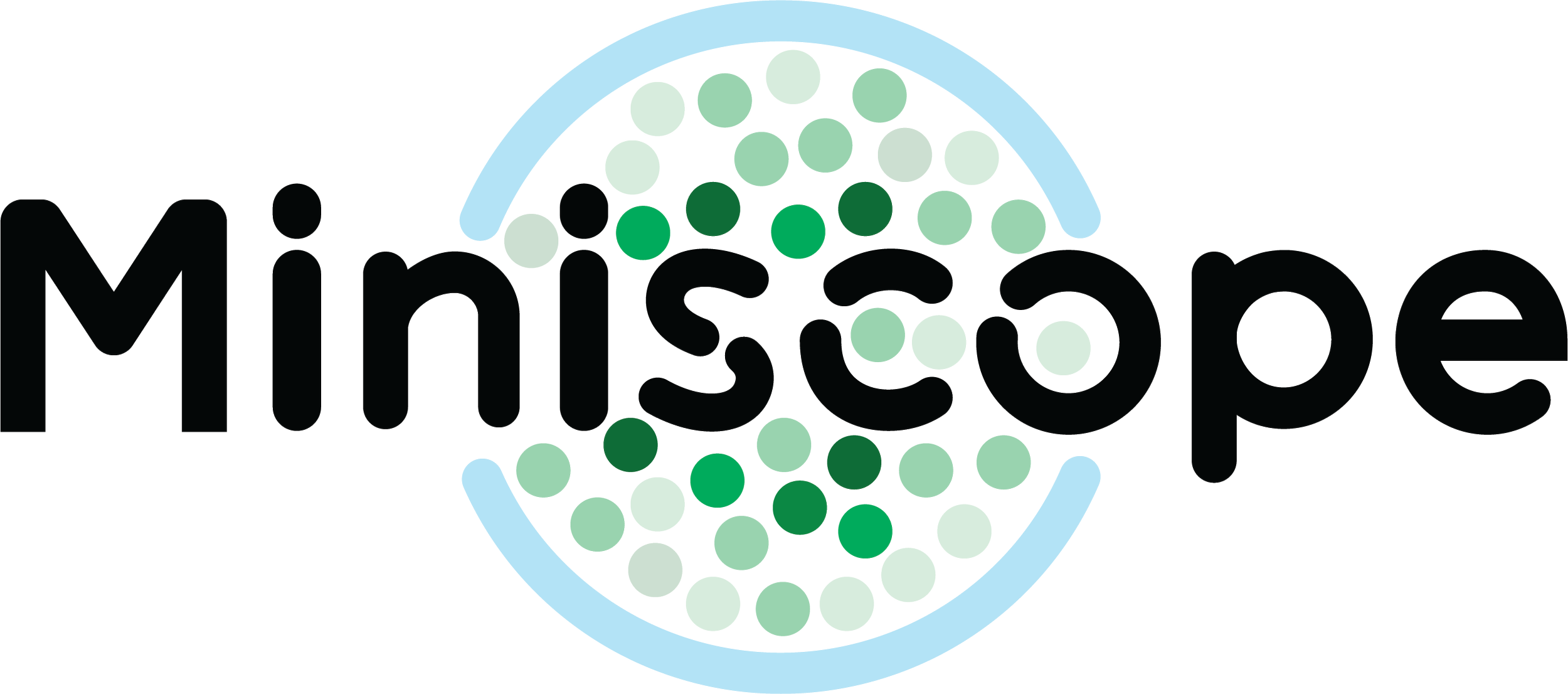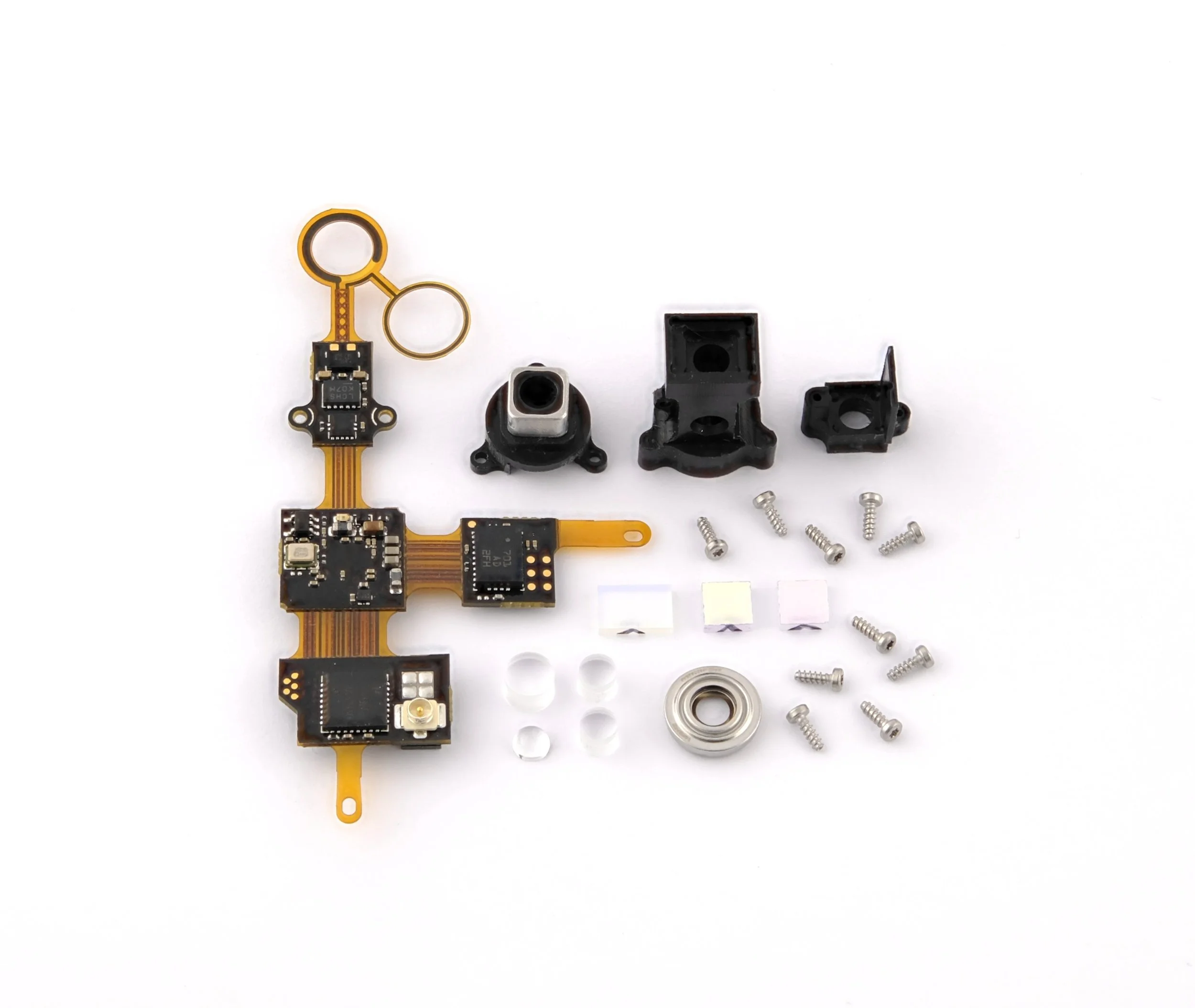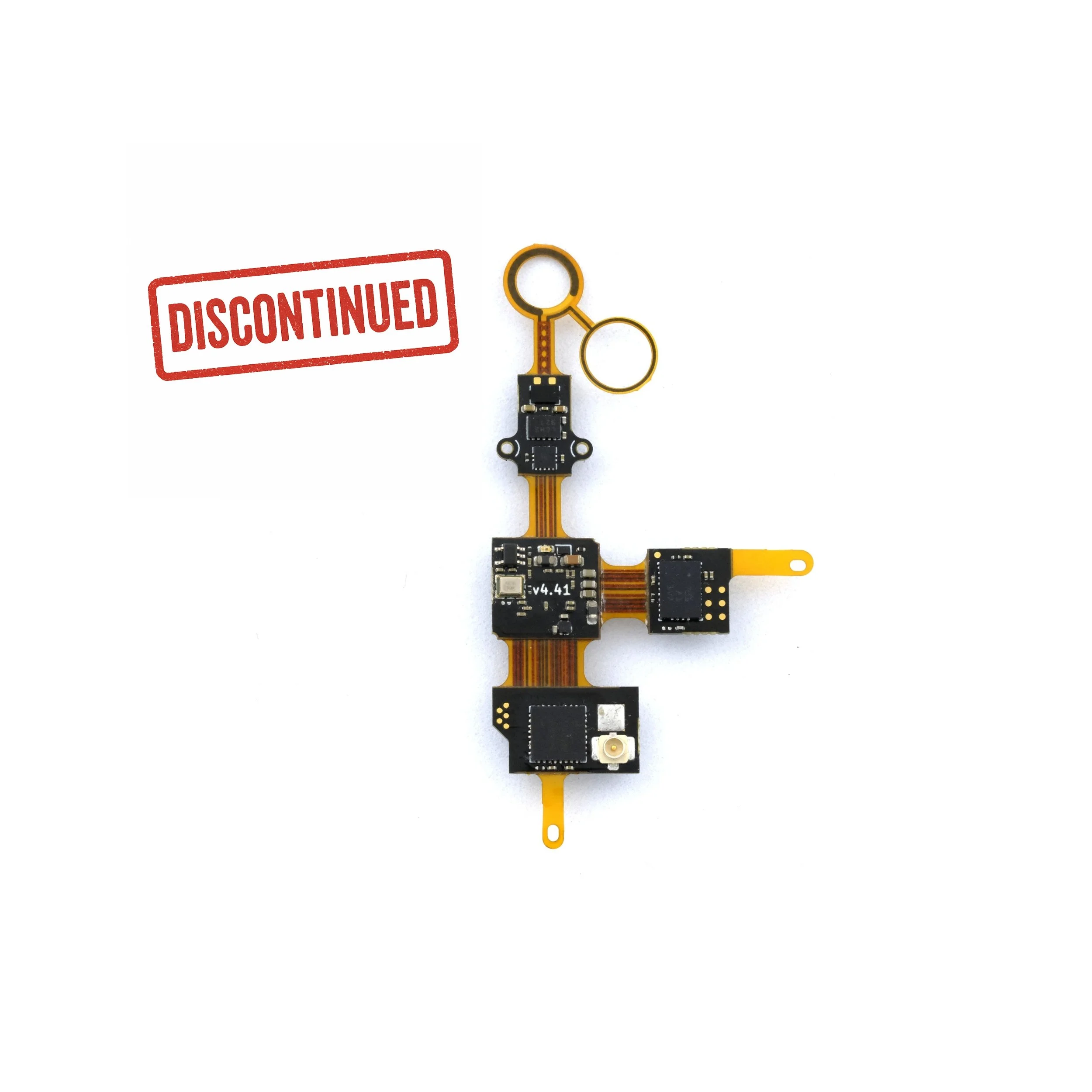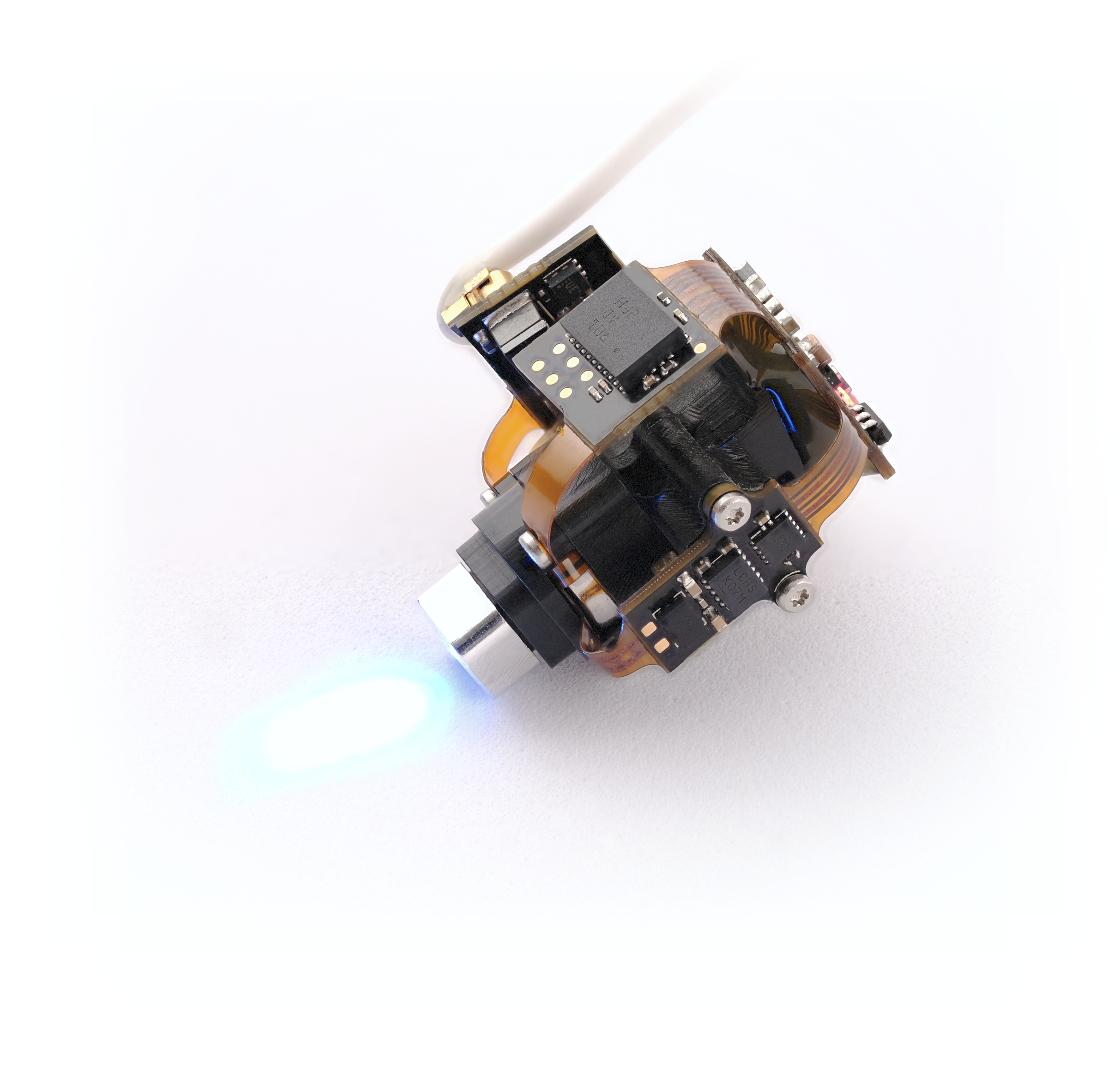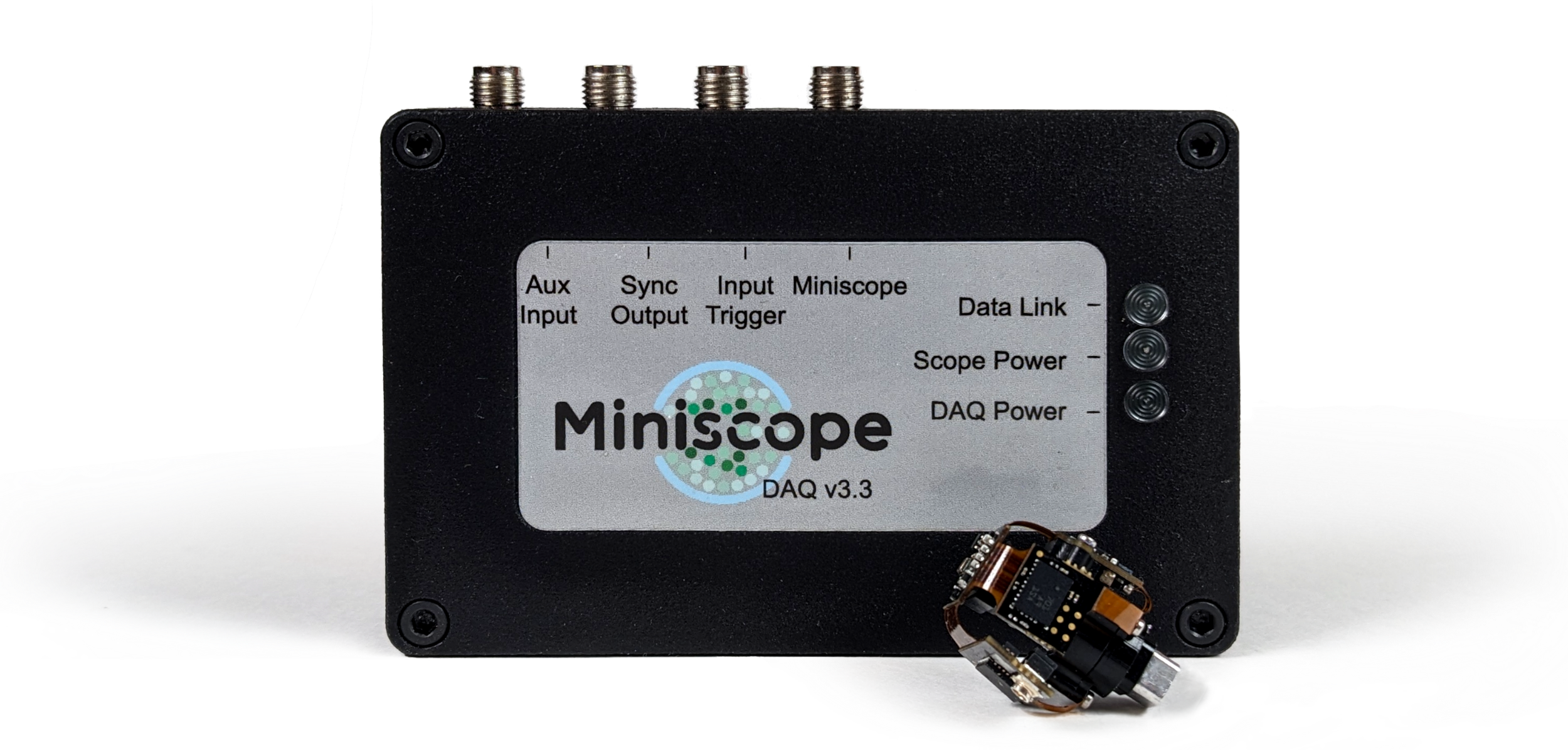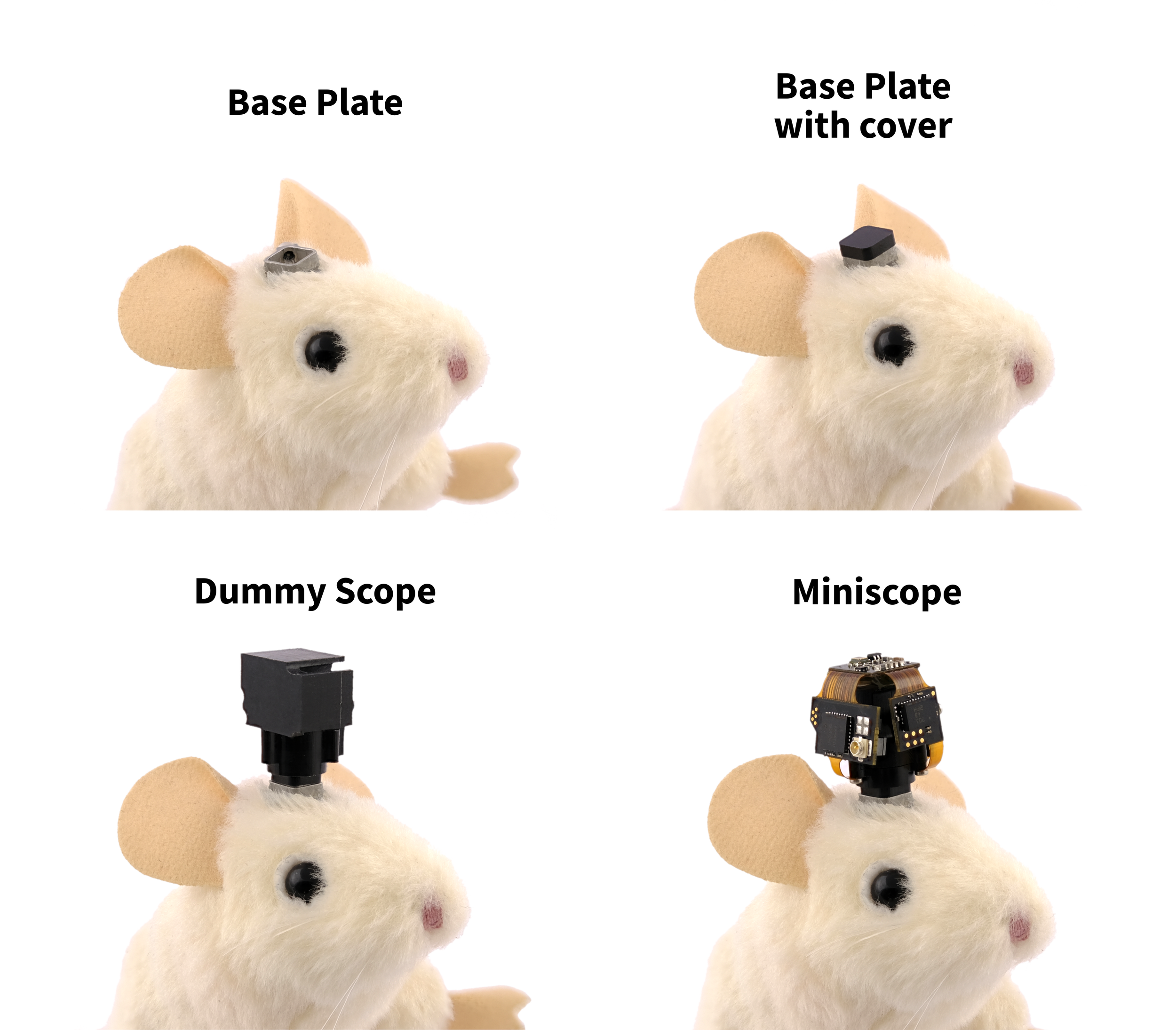Miniscope System
Flexible and affordable single photon calcium imaging
The Miniscope V4 designed by the UCLA Miniscope Team is a lightweight, open-source miniature microscope designed for high-resolution fluorescent imaging in freely behaving animals.
The Miniscope V4 performs single photon imaging, whilst acquiring absolute head orientation to drive torque-free tether commutation for tangle-free naturalistic recordings.
Key Features
2.6 grams and 22 mm tall
Field of view: 1 mm x 1 mm diameter
Working distance: 675 ± 250 μm
Electronic focal adjustment: ± 200 μm
All high resolution achromatic optics
Absolute head orientation sensor
Requires ~1/5th the excitation power of previous systems
Image cortical windows or deep brain regions with GRIN lenses
Connectivity
Connects with the Miniscope DAQ for USB 3.0 data acquisition
Uses a single coaxial cable (~ 1.1 mm in diameter) for power, communication, and data transmission
Provides hardware sync and trigger options for precise timing and integration with other experimental hardware
Stand alone software or integration with Bonsai visual programming language for flexible experiment design
In vivo calcium imaging for naturalistic experiments during ongoing behavior
The Miniscope is a head-mounted fluorescence microscope designed for one-photon in vivo calcium imaging in freely behaving animals. It enables the acquisition and real-time visualization of fluorescent indicators, such as generically encoded calcium indicators like GCaMP in behaving animals. It has a 1 mm diameter field of view which allows researchers to monitor activity across hundreds of neurons simultaneously in shallow (through cortical windows) or deep brain regions (by implanting a relay GRIN lens) without restraining the animal, and track the same cells across weeks. This makes it a powerful tool for studying the neural basis of behavior in naturalistic settings.
Neurons expressing GCaMP in Hippocampal CA1, raw data with no motion correction. Data collected by Federico Sangiuliano (Aharoni Lab, UCLA) and Pingping Zhao (Golshani Lab, USA). Double-click the video to enlarge.
Acquire brain images and absolute head orientation data
The Miniscope uses a single, lightweight coaxial cable for power, control, and data transmission, which reduces tether weight compared to alternatives and greatly improves animal mobility. In its standard configuration, it uses a blue (470 nm) LED to excite GCaMP and a green-pass (500-550 nm) filter to image emitted fluorescence on a 0.48 MP CMOS sensor.
In addition to fluorescent imaging, the scope features a 9-axis inertial measurement unit (IMU), which provides high-resolution, real-time absolute orientation measurements (yaw, pitch, and roll) so that researchers can acquire functional imaging and head orientation data simultaneously. Head orientation data can both provide behavioral insights and is used to drive our torque-free coaxial commutator for freely-moving animals.
Tangle- and torque-free acquisition for long recording sessions
Open Ephys Coaxial Commutators provide a tangle-free connection between the Miniscope DAQ and the Miniscope mounted on a freely-moving animal. This design is unique in that the commutator responds to the real-time head orientation data provided by the Miniscope’s integrated IMU to actively rotate the tether, instead of relying on torque transmission. This prevents tether twisting and allows for much longer recording sessions without interruptions or animal fatigue. This commutation system is available in both single or dual coaxial configurations to use either one or two miniscopes simultaneously.
Double-click the video to enlarge.
Data acquisition and synchronization with the Miniscope DAQ
The Miniscope DAQ (data acquisition board) serves as the interface between a Miniscope and a computer. The DAQ connects to the computer through a high-speed USB 3.0, ensuring reliable and easy-to-use data transfer. Our redesigned DAQ supports enhanced sync and trigger capabilities for hardware triggering, synchronization, and control. This allows frame-resolution synchronization with external devices such as behavioral cameras and external triggering to control recording sessions or LED activation.
Miniscopes are also compatible with our multimodal ONIX acquisition system. This flexible acquisition ecosystem allows Miniscopes to be used in concert with other recording technologies simultaneously, such as neuropixels probes, passive silicon probes, or tetrode arrays. Click here for more information.
Easy habituation and stable Miniscope mounting
The Miniscope system relies on a machined aluminum base plate that serves as a robust, lightweight mounting interface for attaching the Miniscope to the animal's skull. The cone-tip set screw on the base plate secures onto a specific point on the Miniscope’s aluminum sleeve to ensure precise alignment and stability across imaging sessions while enabling easy attachment and detachment of the Miniscope between experiments.
We also provide a micromachined replica that matches the weight and dimensions of the real device, called a “dummy scope”. This low-cost device is useful for habituation prior to experiments and for practicing miniscope mounting. The dummy scope can be used to reduce stress during recordings, promoting natural behavior and consistent data collection during the actual imaging sessions.
Double-click the video to enlarge.
Free, open-source acquisition software options
There are multiple software options for acquiring data for the Miniscope. The Miniscope GUI is produced by the Miniscope Team and provides a simple application for acquiring, controlling, and visualizing Miniscope data. The system is compatible with existing and future Miniscope Team software developments.
In addition, Open Ephys has developed the OpenEphys.Miniscope package for Bonsai, an open-source visual programming language which is ideal to control behavioral experiments with multiple hardware, such as cameras and behavioral devices. This package can be used for simple acquisition, control, and visualization of Miniscope data with seamless integration with the torque free commutator. Since it’s a Bonsai Package, it can also be used in concert with hundreds of other pieces of supported hardware to perform complex closed-loop actuation of the Miniscope, online data processing, orchestrate complex behavioral tasks, and to build your own experimental GUIs.
Tailor your Miniscope to your research needs
Our open source philosophy empowers users to modify the system to meet the experimental requirements. If you're using fluorophores other than GCaMP that require different excitation and emission wavelengths, you can change the Miniscope's LED and filters accordingly. The objective lenses can be changed to get a different field of view diameters and working distance. Tethers can be ordered in custom lengths to suit different arenas. And in case of issues, you can repair your own device to get back on track in minutes by replacing the Miniscope PCB while keeping the rest of the assembly intact, saving your lab time and money.
Want to learn more? Have a look at these links 👇
Check out our Training page or get in touch with us by sending an email to training [at] oeps [dot] tech
Take a look at the Online Miniscope Workshop
Citing this work
Citations are critical for tracking the impact of open source designs like this one. If you use this hardware, please cite the following papers in your work:
Miniscope
Cai DJ, Aharoni D, Shuman T, Shobe J, Biane J, Song W, Wei B, Veshkini M, La-Vu M, Lou J, Flores SE, Kim I, Sano Y, Zhou M, Baumgaertel K, Lavi A, Kamata M, Tuszynski M, Mayford M, Golshani P, Silva AJ. (2016) A shared neural ensemble links distinct contextual memories encoded close in time. Nature 534, 115–118 LINK
Bonsai
Lopes G, Bonacchi N, Frazão J, Neto JP, Atallah BV, Soares S, Moreira L, Matias S, Itskov PM, Correia PA, Medina RE, Calcaterra L, Dreosti E, Paton JJ, Kampff AR. (2015) Bonsai: an event-based framework for processing and controlling data streams. Front. Neuroinform. 9: 7 LINK
Torque-free Commutator
Newman JP, Zhang J, Cuevas-López A, Miller NJ, Honda T, van der Goes M-SH, Leighton AH, Carvalho F, Lopes G, Lakunina A, Siegle JH, Harnett MT, Wilson MA, Voigts J. (2024) ONIX: A unified open-source platform for multimodal neural recording and perturbation during naturalistic behavior. Nat. Meth. 22: 187–192 PDF
Are you interested in other published Open Ephys tools? Do you want to see how scientists around the world are using our hardware? Take a look at the work featured on our Publications page.
